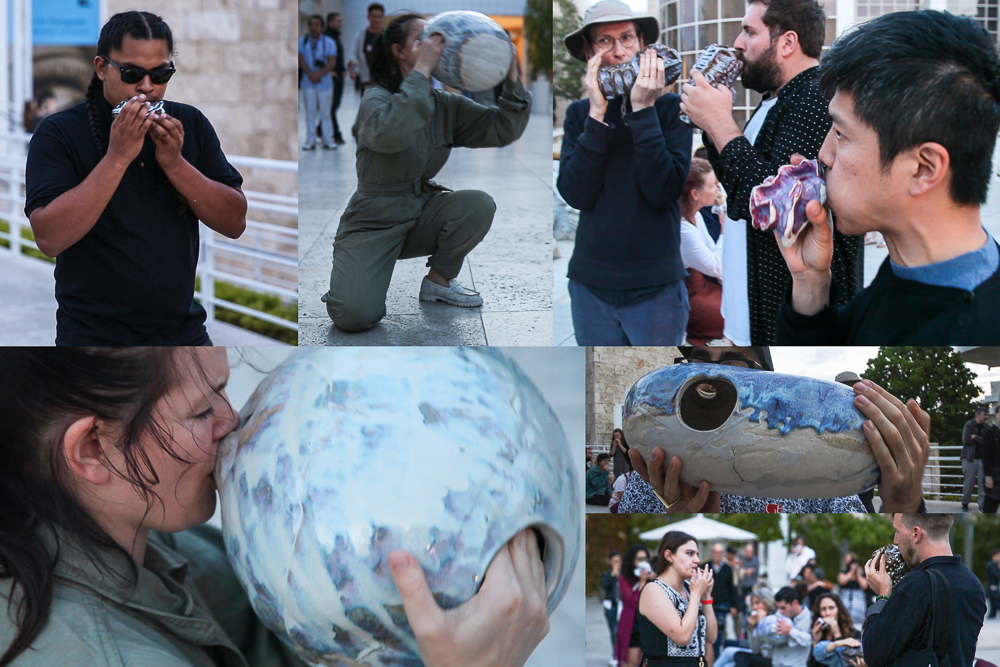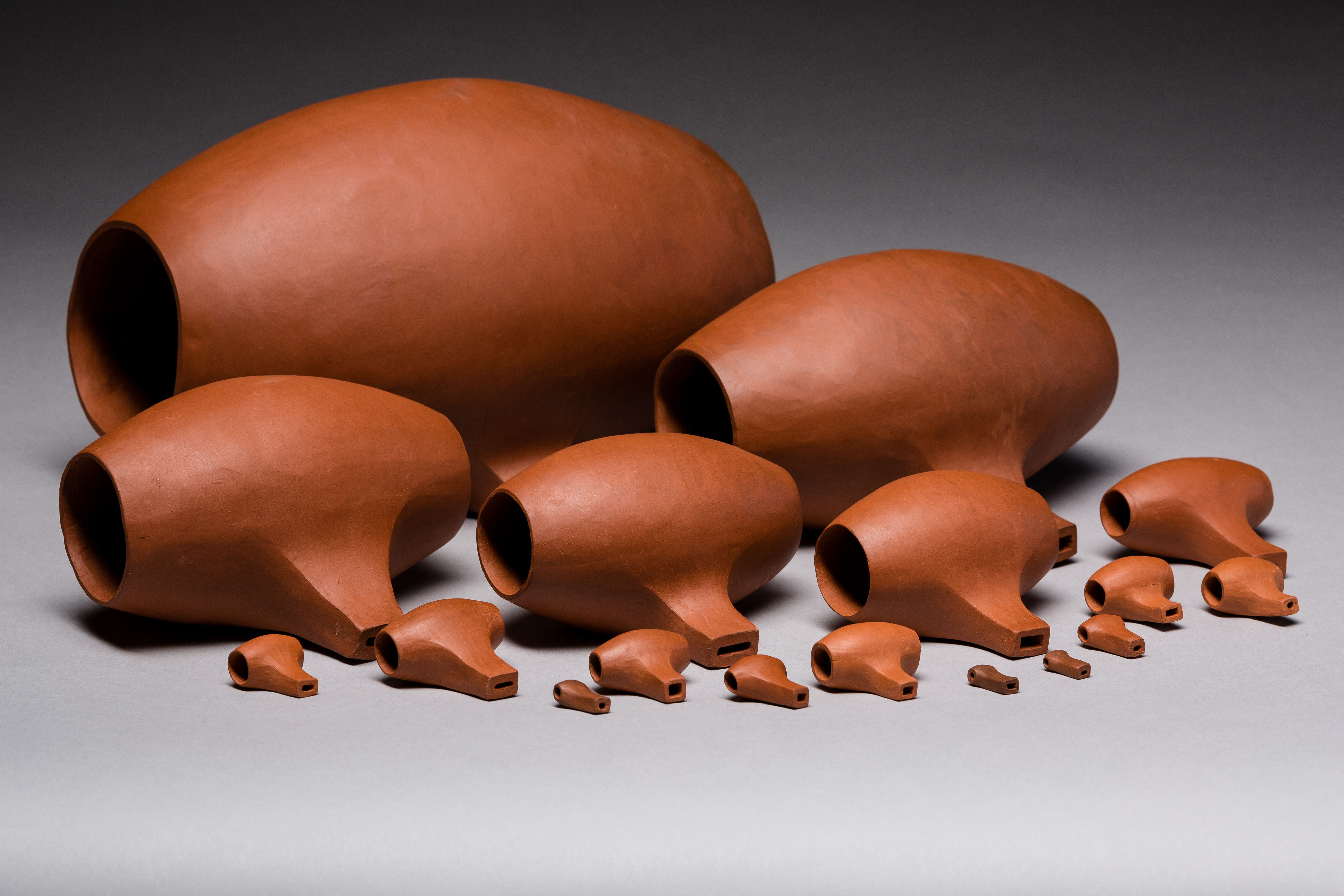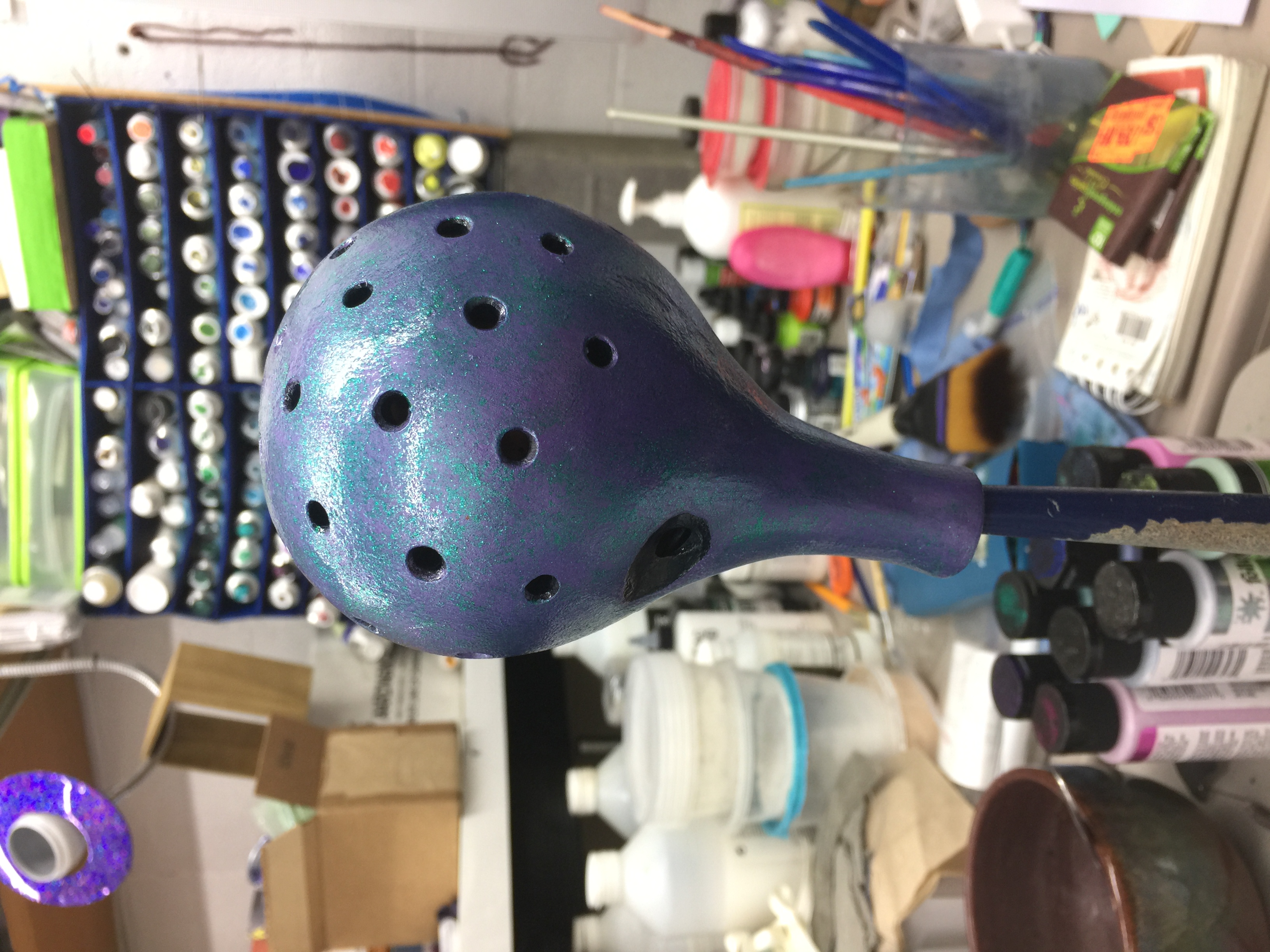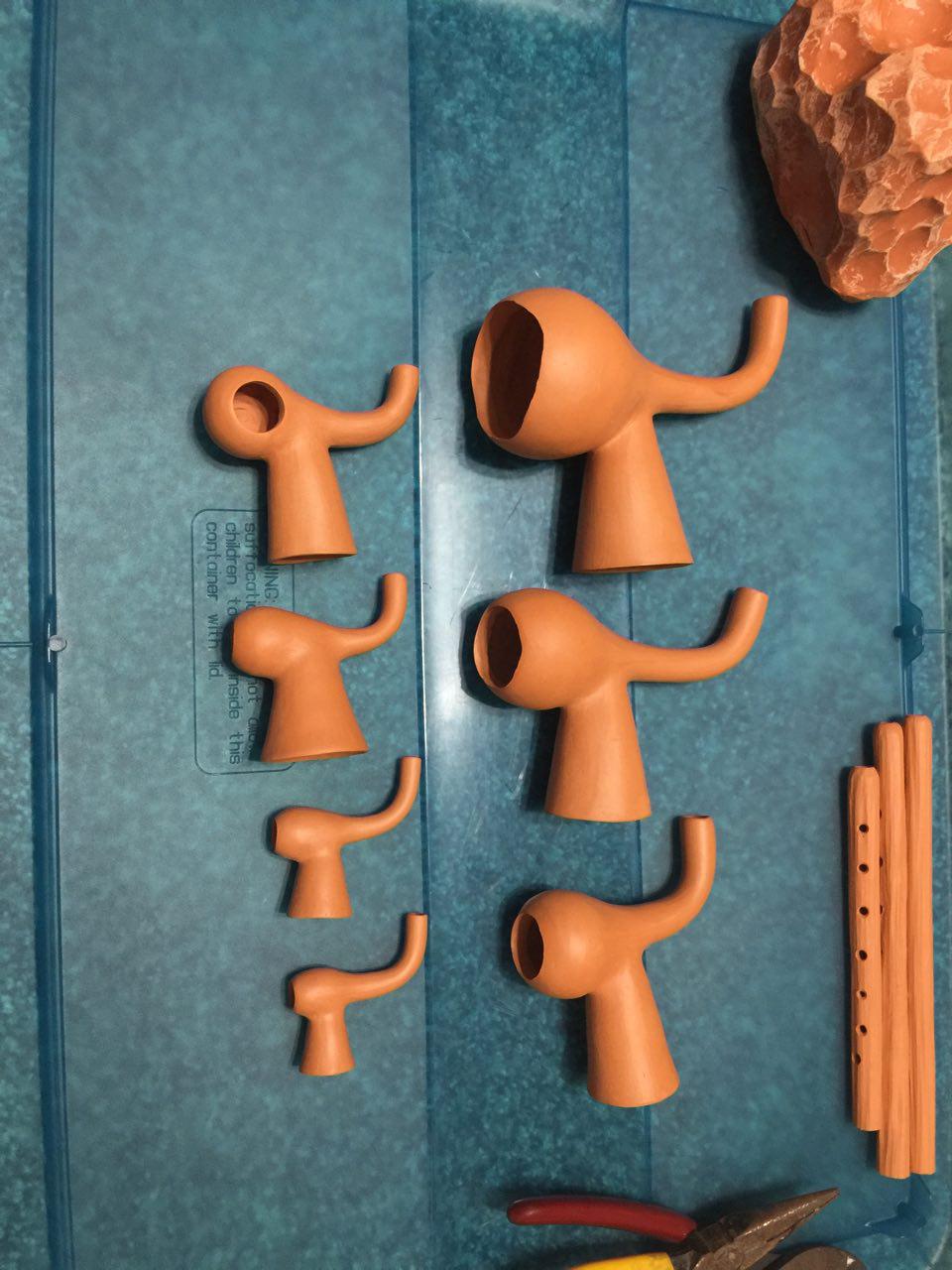This is an old revision of the document!
Table of Contents
Innovations on the Ocarina
Here are some unusual innovations on the ocarina. This page features many ocarinas that brake from the familiar form of the instrument in various ways.
Size
The ocarina is easily the smallest wind instrument in the world. It also has the potential to be the largest.
Interface (fingering systems)
Many alternative ways of interacting with the ocarina have been made. More standard instruments have 4, 6, 10, or 12 holes, intended to allow players to play in the familiar twelve pitch system. Many other strange innovations on the ocarina have been made, often allowing expanded use of pitch.
Microtonal Ocarinas
Perforated Ocarinas
Body Shape
This category if for ocarinas that have familiar fingering systems and sound ordinary but have unusual body shapes.
Sound Profile
The timbre of the ocarina can be altered in various ways involving adding a mirliton, adding chambers that are played simultaneously, or altering the voicing to give it some turbulence.
Turbulence Flutes
These instruments are related to the ocarina in that they have a fipple and a windway, but they use a closed chamber and turbulence to alter the sound quality of the instrument. See Roberto Velázquez Cabrera to see some research into the construction and acoustics of early Mesoamerican instruments that featured sound production using turbulence. All contemporary instruments are innovations on these early instruments.
Multiple Chambers
Huacas
Interference Ocarina
Unusual Materials
Wood
Metal
glass
Leather
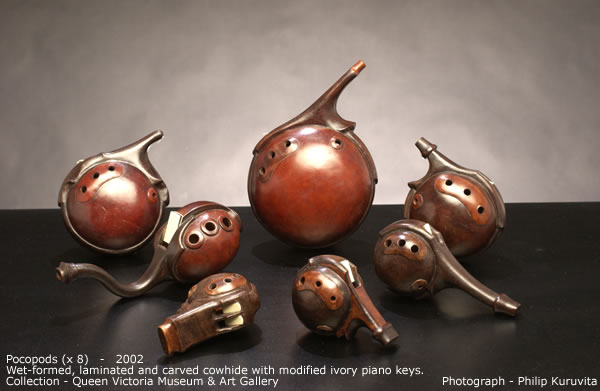
These are the Leather Poco pods by artist Garry Greenwood.
Here is the curious description from his (very ancient) website entry on them-1)
“Another invention of Greenwood's are the leather ocarina, named 'Poco pods'. The sculptor was interested to discover the difference between the traditional ceramic ocarina and one made from leather and he also wanted to discover the acoustic principle of the ocarina's characteristic 'whistle'.
These little instruments proved to be one of the most difficult projects Greenwood had undertaken with problems including the size of the finger holes, a lack of consistency in sound – in the prototype there seemed to be no relation between sound and finger – and controlling the tone. The last problem was caused by the large volume of air inside the pod which Greenwood found was greater then that of a bass recorder.
Greenwood's first instrument was basically flat. (All subsequent Poco pods are sphere-shaped) He used a piece of the body of the instrument but then spent two frustrating days trying to find the right distance between this and the mouth-hole. When he eventually found the right place he discovered that only one hole sounded, thus in subsequent instruments the holes were cut out after the piano key was put in place.”
There are no audio recordings of these instruments, but they looks well built and are very visually pleasing. I would guess that the tonal quality of making an ocarina out of leather would be similar to making an ocarina out of a very soft wood such as maple, birch, pine, or even something like basswood. I have one of the Charlie Hind wooden kit ocarinas in maple that has been very well sealed and the sound is very soft and thin. It has a sweet recorder like quality (recorders are also most often made of very soft woods like maple to give the sound a characteristic quality).
Makers of Unusual Ocarinas
Mestre Nado (Aguinaldo da Silva)- makes multichamber ocarinas
Susan Rawcliffe- has invented many unusual ocarinas
Garry Greenwood- leather sculptor
Roberto Velázquez Cabrera- Recreates mesoamerican ocarinas
Sharon Rowell- Inventor of the Huacas
